The Best New Indie Sci-Fi of the Fall; Witness the Dawning of Imaginative Worlds
With dystopian sagas on the wane (though there’s still one juicy entry in this lineup), the best new science fiction strikes out for unexplored territory, weaving humor and satire into story lines and drawing fewer and fewer distinctions between science fiction, fantasy, and other genres. These eight stories and collections are marked by character-driven plots and aliens as complex, individualistic, and eccentric as humans. As frosting on the cake, the republication of the long-out-of-print Jack of Shadows, by the late Roger Zelazny, reminds us that top-flight science fiction truly is timeless.
Strangers Among Us
Tales of the Underdogs and Outcasts
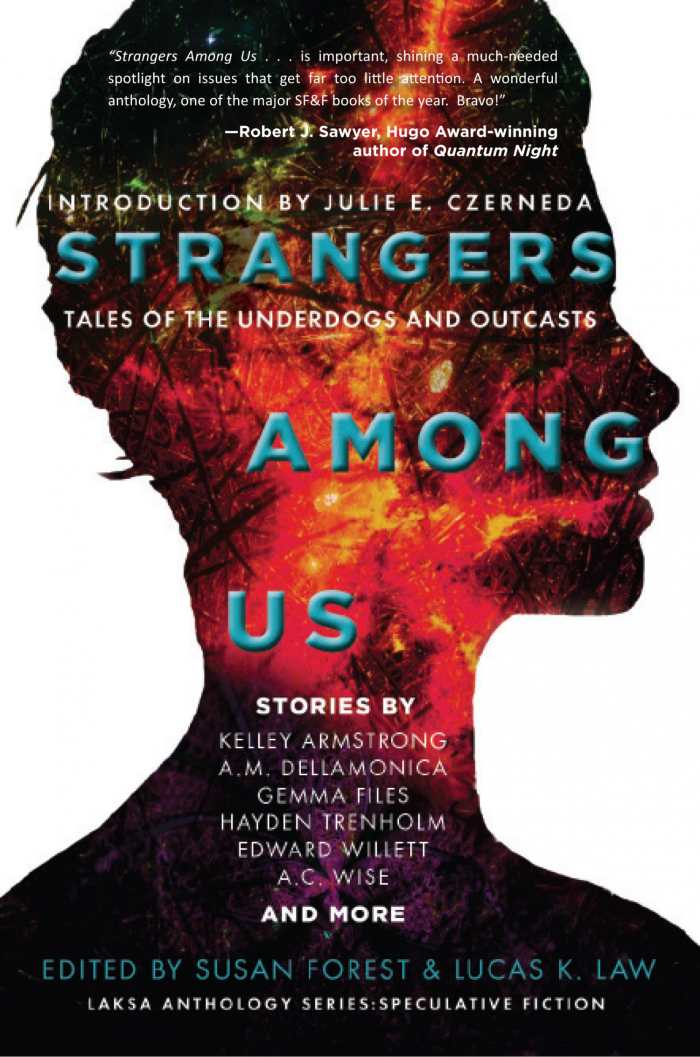
Kelley Armstrong
Suzanne Church
A.M. Dellamonica
Gemma Files
James Alan Gardner
Bev Geddes
Erika Holt
Tyler Keevil
Rich Larson
Derwin Mak
Mahtab Narsimhan
Sherry Peters
Ursula Pflug
Robert Runté
Lorina Stephens
Amanda Sun
Hayden Trenholm
Edward Willett
A.C. Wise
Julie E. Czerneda
Susan Forest, editor
Lucas K. Law, editor
Laksa Media Groups
Softcover $17.95 (368pp)
978-0-9939696-0-7
Buy: Local Bookstore (Bookshop)
In this outstanding collection, nineteen established writers are asked to explore the borderland between mental health and mental illness. Since all of the contributors come from a science-fiction and fantasy background rather than a medical one, the results are anything but the same-old, same-old. The opening story, “The Culling,” depicts a heroine unquestionably sane by our own standards but deemed a mental defective and sentenced to death in the dystopian world she inhabits. Other stories, such as “Dallas’s Booth,” “How Objects Behave on the Edge of a Black Hole,” and “Living in Oz,” show ordinary people whose abnormal behavior is a realistic response to disability, isolation, and grief. Some of the strongest stories remain deliciously open to interpretation. In “Troubles,” a young Belfast woman recovering from a psychotic break sees and talks to faeries who make a convincing case for their reality, while in “The Weeds and the Wildness,” an aging, lonely person becomes an ecoterrorist in response to the “merciless” war waged by sinister lawn specialists bent on eradicating all that is wild and natural. Society is the patient in “The Age of Miracles,” which depicts a culture gone so overboard with talking, monitoring, and nagging appliances that only the Dalai Lama can maintain his sanity. The writing is excellent throughout, and even the few not-as-strong stories make for a good read. This is a unique collection that should attract readers of all genres.
SUSAN WAGGONER (August 26, 2016)
The Silvers
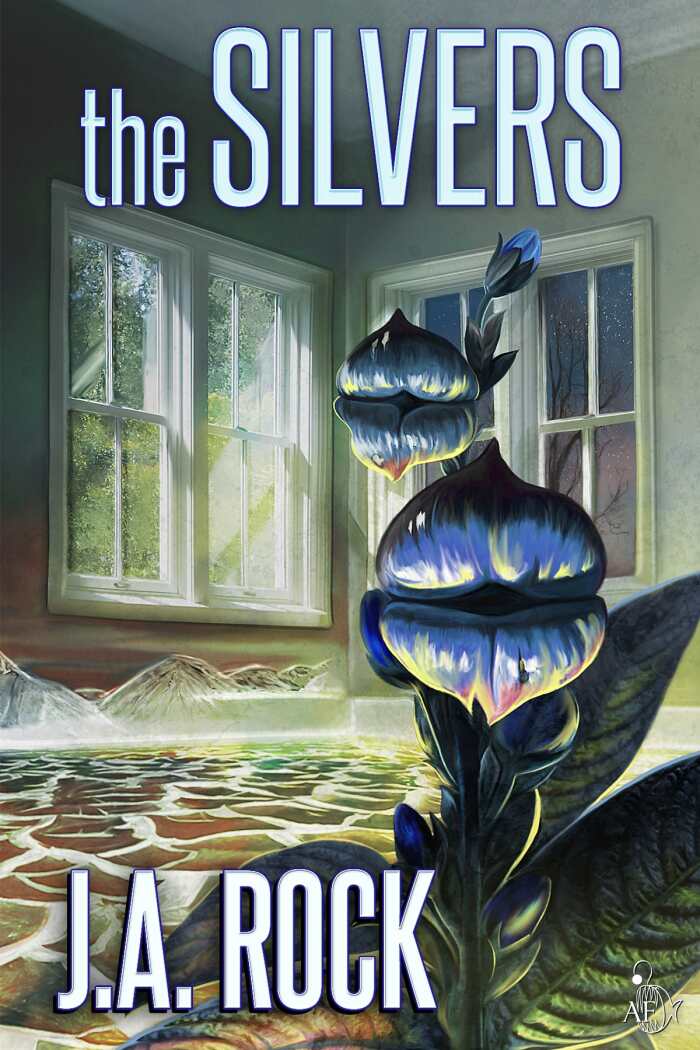
J.A. Rock
Riptide Publishing
Softcover $18.99 (312pp)
978-1-62649-432-9
Respect, trust, and, ultimately, love between two men of different species is rendered compelling and utterly believable in J. A. Rock’s The Silvers. B., captain of a small mission to investigate intelligent life on a far-flung planet, looks the other way when the Silver Planet’s pale gray aliens are treated like lab animals by some members of his crew. “They’re not us,” B. repeatedly tells himself, for the Silvers seem incapable of resistance, anger, and even pain. To B., their passivity and lack of individuality reflect the Silver Planet itself—monochromatic and sparse, with a single species of flower, a single food source, and very little life. There is no war because there is literally nothing to fight over; sex for pleasure is unknown, and the only real achievement of the Silvers as a species is their ability to count everything from the hairs in an Earthling’s eyebrow to their own population with computer-like speed.
When B. rescues Imms, a Silver wounded by one of the crew, the relationship they form challenges everything B. thinks he knows about the Silvers, and much of what he thinks he knows about himself. The writing is skilled throughout, with realistic, well-rounded characters. Imms, who learned English from a dime novel set in the Old West, leaving him prone to expressions like, “Hold it right there, pardner,” is especially appealing, one whose innocence brings out the otherwise-cynical B.’s better nature. Their return to Earth together marks the end of an idyll, and their relationship is subjected to the strains of cultural adjustment, infidelity, and outside forces who seek to return Imms to lab-rat status. By turns funny, bittersweet, and poignant, this well-paced read is, above all, human.
SUSAN WAGGONER (August 26, 2016)
The High Ground
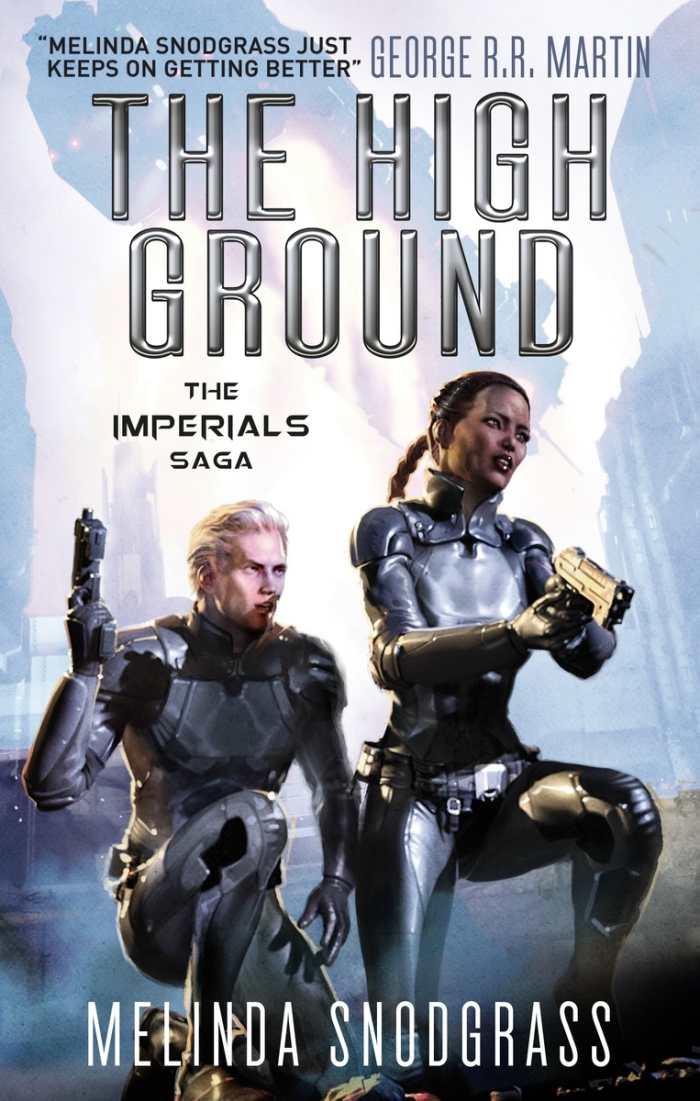
Melinda Snodgrass
Softcover $14.95 (356pp)
978-1-78329-582-1
In Melinda Snodgrass’s The High Ground, book 1 of the The Imperials Saga, the riddle of interstellar travel has been solved, and humans are but one of several intelligent species sharing the planet. Where there is intelligent life—in this case the Cara’ot, an alien race bent on subjugating the universe—there is danger afoot. Crucial to defense of the Solar League is the High Ground, the Solar League’s elite military academy. Mercedes, oldest daughter of the League’s emperor, is sent to the academy by her father to popularize women in the military, while Tracy accepts a scholarship to escape the tedium of his father’s tailoring business. The High Ground covers their freshman year, and despite a story arc that would benefit from more action, the characters and world building are strong enough to pull the story. Quality writing that alternates between the characters’ points of view makes Mercedes and Tracy relatable and accessible.
Furthermore, the aliens who’ve joined Earth’s culture are unfailingly interesting—some dominate the restaurant trade, using their prehensile tails and six-fingered hands to negotiate tricky rope walks while balancing trays of food; others find that their two front eyes and two side eyes give them a leg-up in surveillance-related jobs. Spanish and Anglo-Saxon cultures have merged, and society echoes a feudal era, with duels, emperors, nobles, and a rigid class system. Though this is at heart a YA romance, skilled writing, a world that arouses curiosity, and gathering clouds of political intrigue will draw crossover readers as well.
SUSAN WAGGONER (August 26, 2016)
Jack of Shadows
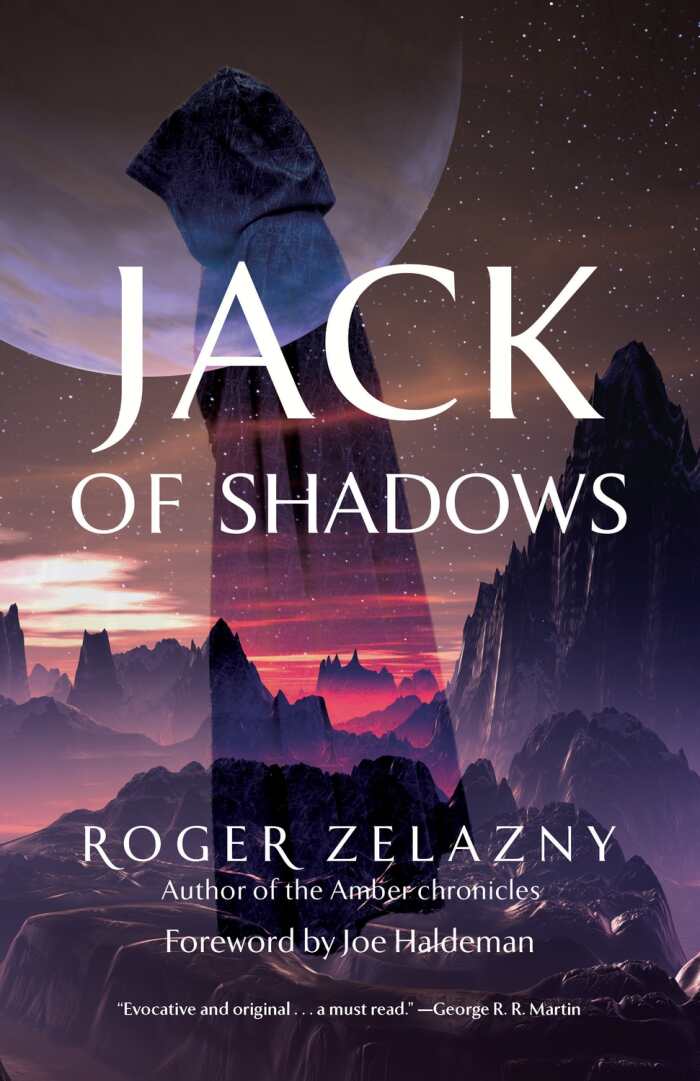
Roger Zelazny
Chicago Review Press
Softcover $15.99 (216pp)
978-1-61373-524-4
Buy: Local Bookstore (Bookshop)
The republication of Jack of Shadows, by the late Roger Zelazny, is set on a planet half bathed in perpetual light and half shrouded in eternal dark. The sunlit hemisphere is modern, characterized by technology, business, and relative tranquility; the dark hemisphere is a feudal world ruled by warlord magicians and energized by sorcery. From the twilight realm between comes Jack, an infamous thief who, like others of his kind, can die and regenerate many times before his final life is expended. Also like others of his kind, Jack believes that he has no soul. After falling into a trap devised by his enemy, the Lord of Bats, Jack is wrongly executed. Fully regenerated, he vows revenge and embarks on a multiyear odyssey that will take him from the dark lands into the world of light and back again, armed with knowledge that will ensure victory even as it destabilizes the planet. Along the way, Jack is forced to confront the soul he denies having, and must decide whether or not to reverse his Faustian bargain.
Originally published in 1971, the novel is richly imagined, and descriptions of the dark lands are especially lush and alluring. By contrast, Jack’s tenure posing as a university professor in the land of light seems underexpressed, but this may be deliberate, for Zelazny was a master of the genre. It is when the story returns to the dark lands that the book presents Jack’s rich moral dilemma. The story is fast-paced and compelling at every turn, proof that good science fiction—despite the technological advances of intervening years—is timeless.
SUSAN WAGGONER (August 26, 2016)
Return of the Continuums
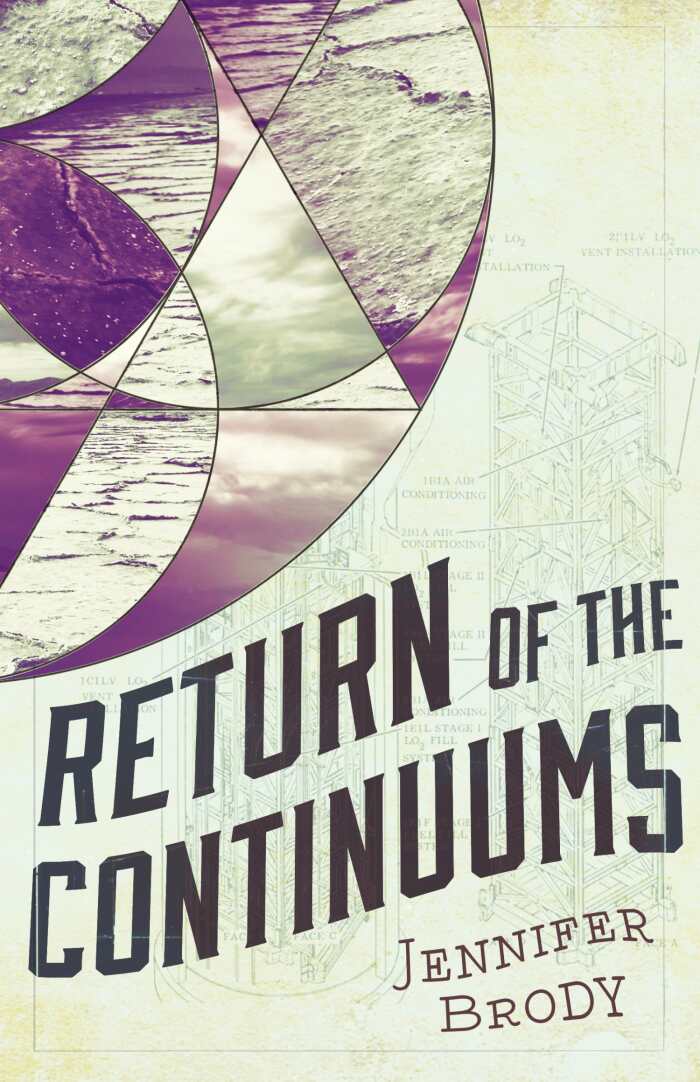
Jennifer Brody
Turner
Softcover $14.95 (432pp)
978-1-68162-258-3
Buy: Local Bookstore (Bookshop)
Likable characters, an intricate world, and imaginative settings combine to make a satisfying young-adult read in Jennifer Brody’s Return of the Continuums, the second book of the dystopian Continuum series.
A millennium ago, a cataclysmic event made Earth’s surface uninhabitable. Survivors were selected to carry on the human race in thirteen enclosed, isolated, and self-sustaining habitats, some placed underground, some beneath the ocean floor, and some in space. Without communication or even knowledge of the other continuums, each society has followed a different path.
Heroine Myra escaped the religious dictatorship of the undersea 13th Continuum in order to search for oxygen, which her colony was running out of. On the quest, she met and joined forces with Aero, a young soldier from the space-based militaristic 2nd Continuum. Return of the Continuums finds Myra and those who escaped with her on the surface of the Earth, a terrain previously thought to be nothing more than myth. Here they meet a third major character, Seeker, a claw-bearing, fur-bearing female from yet another Continuum. Aero is also somewhere on the Surface, but despite the strong mental connection they formed in the earlier book, Myra cannot locate him. With the introduction of Aero and Seeker, Myra’s simple search for oxygen has grown into a mission to abolish the restrictive Continuums and reunite the people of Earth. Adding suspense to the plot is the growing attraction between Myra and Aero, whose indoctrination forbids emotional attachment of any sort. Readers who thrive on dystopiana will be turning the pages to see where it will all lead.
SUSAN WAGGONER (August 26, 2016)
And Yet It Moves
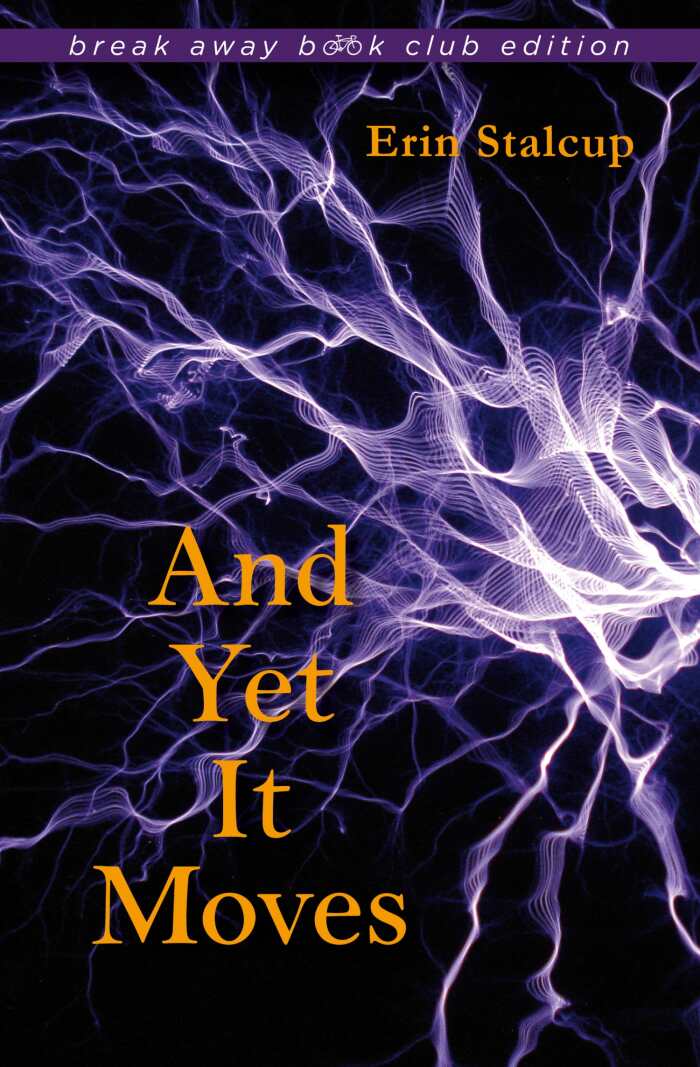
Erin Stalcup
Indiana University Press
Softcover $21.00 (260pp)
978-0-253-02203-5
Buy: Local Bookstore (Bookshop)
In Erin Stalcup’s And Yet It Moves, science, physics, and electricity (the reliably immutable phenomena that connect our universe) are the background for short stories of startling human disconnection and alienation. “Einstein” envisions the letters an aging and ailing Albert Einstein might have written to the daughter he and his future wife conceived, gave away, and never spoke of again. In the longest piece, “All These Stairs,” an elevator operator sandwiches the meager but heartbreaking facts of her lonely life into a stream of consciousness, including rich, detailed descriptions of objects and strangers, while a much-anticipated reunion with the son she hasn’t seen in over a decade becomes another missed connection. “Ochre is the Color of Deserts and Dried Blood” follows newlyweds as they search for evidence of the tribes, families, and rituals that once connected people to the land and to each other.
The beauty in each story is that, though alienation has become the default in each character’s life, the desire to connect is ever present, like a beating heart, no matter how bruised. In some cases, most notably “Keen,” in which a professional mourner sings a lost soul back from the brink, connection prevails. The writing throughout leaves subtle spaces that allow readers to form their own conclusions. Two stories, “In the Heart of the Empire” and “Brightest Corners,” are a bit less successful because these spaces are absent, filled in with set-ups and explanations. This is a solid debut collection with strong cross-genre appeal.
SUSAN WAGGONER (August 26, 2016)
The Book of Ralph
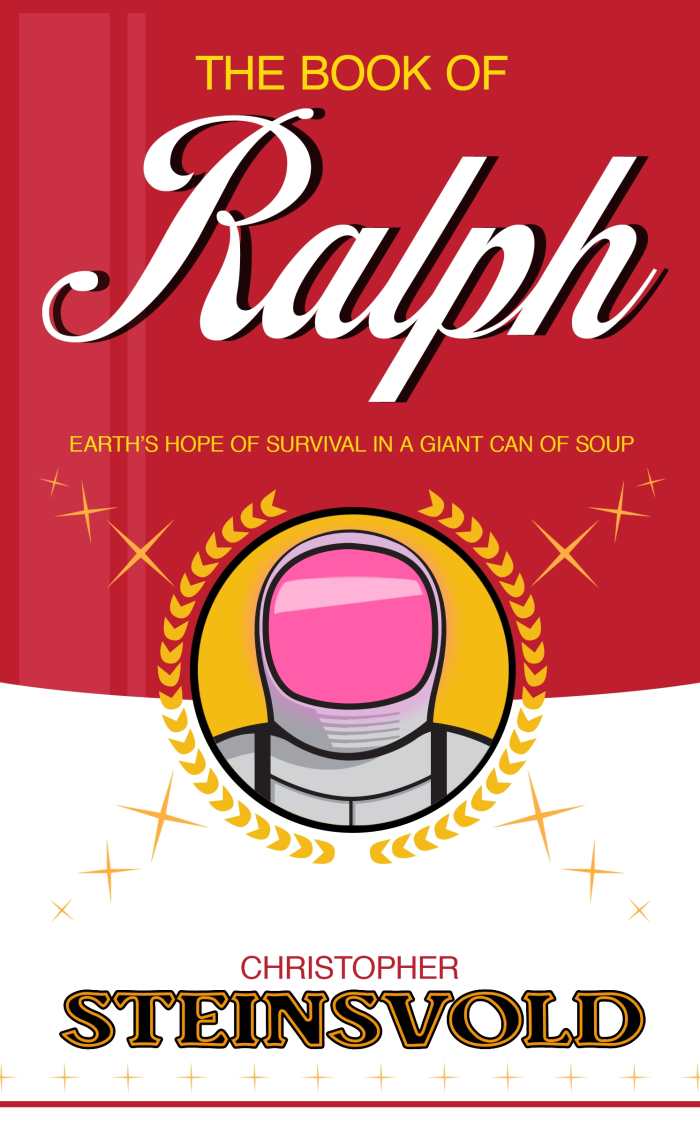
Christopher Steinsvold
Medallion Press
Softcover $14.09 (416pp)
978-1-942546-34-4
Christopher Steinvold merges science fiction and social satire in this quirky and highly entertaining look at first contact in the not-too-distant future. When Earth looks up one night and sees, “Coca-Cola” scrolled across the full moon in bright red letters, that company is immediately suspected of polluting the view. The accusations are proved groundless, and just as the matter is starting to fade from the public mind, a giant Campbell’s soup can appears over the White House, then lands gracefully on the lawn. Inside is Ralph, an endearing alien with a soft spot for humanity and a dire warning which he insists on delivering to the president in person: in two days, Earth will be invaded by forces from the evil planet Kardash. Resistance is futile, and the only choices are annihilation or joining the aliens in their destruction. The book is as much commentary on contemporary society as it is apocalyptic science-fiction.
Ralph, well-versed in American culture, emerges from his soup-can capsule to the Rocky theme song, fist pumping, waving a gigantic American flag, and wearing a NASCAR suit studded with brand names and logos. Despite the threat of imminent extinction, humans remain true to type. Crowds groove on Ralph as an ubercelebrity. Inside the White House, advisors scramble to preserve their own sinecures while storm clouds gather, wonder what trick of language will allow them to avoid saying “Kardashian invasion,” and, never letting a crisis go to waste, seize the opportunity to have sex in the Lincoln Bedroom. The writing is crisp, the observing eye is keen, and the bittersweet ending is simultaneously cinematic, sentimental, and thought-provoking.
SUSAN WAGGONER (August 26, 2016)
Super Extra Grande
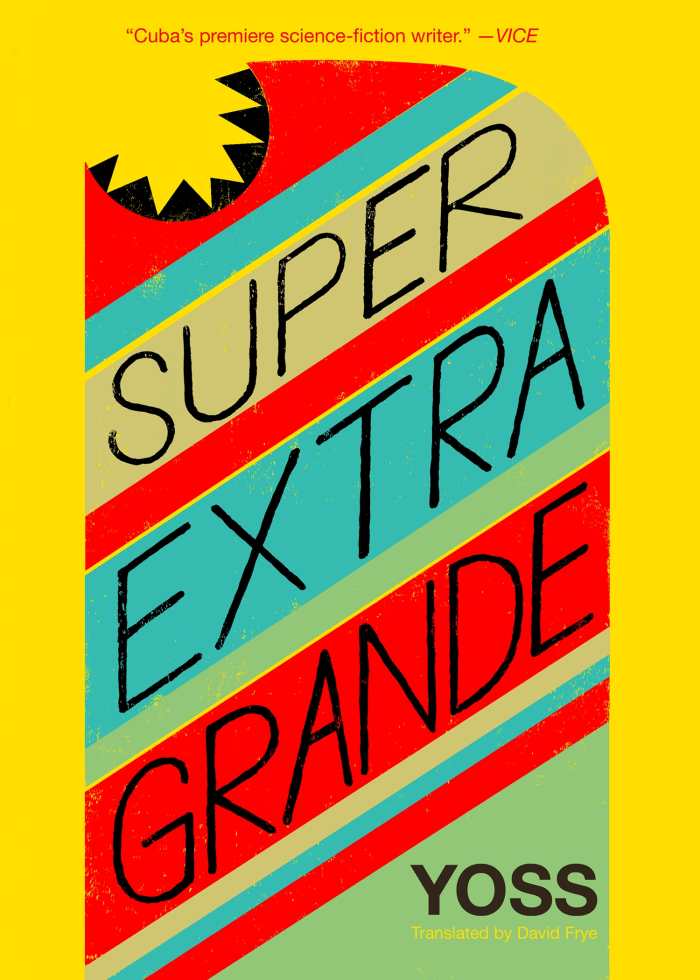
Yoss
David Frye, translator
Restless Books
Softcover $15.99 (160pp)
978-1-63206-056-3
Buy: Local Bookstore (Bookshop)
Large animal veterinary practice takes on gargantuan proportions in Yoss’s Super Extra Grande, a romp of a novel that weds sci-fi and high farce. In a future that has cracked the code on intergalactic travel, narrator Dr. Jan Sangan treats the largest animals in the galaxy. Something of a giant himself, Sangan suffers from rampant bone growth induced by lengthy space travel during childhood. The overgrowth of bone also affected his face, giving him, by his own admission, the look of “an ogre,” an affliction more than offset by gifted self-promotion and an engaging personality. Opening scenes find him toiling through the alimentary canal of a worm the length of many football fields in search of a client’s lost bracelet, all the while keeping up a lively, freewheeling internal monologue that touches on everything from the volume of mush a worm can disgorge to the competitive nature of intergalactic sex.
The fact that he can endure the muck, stench, and danger of his job has helped Sangan achieve notoriety as the only DVM in the galaxy whose patients could crush him with a single involuntary contraction of the gut. When a single-celled creature the size of a small moon threatens galactic peace by swallowing two ambassadors, Sangan is called to the rescue. As luck would have it, both ladies—one a humanoid from another planet, one a six-breasted Cetian—were once rivals for Sangan’s attentions. There’s little doubt that all will end well, but the pleasure of this book lies in getting there. A delightfully mangled form of Spanglish is laugh-out-loud clever, double entendres abound, and sly literary references provide a double treat for fans of Jonathan Swift.
SUSAN WAGGONER (August 26, 2016)
Susan Waggoner

